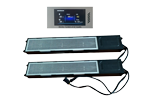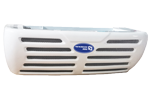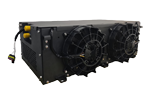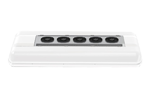The ultraviolet lamp in the bus air purifier uses the UVC short-wave light generated by it to irradiate the air. When various bacteria, viruses, parasites, and other pathogens in the air receive a certain dose of ultraviolet light radiation, the ultraviolet rays penetrate the bacteria and viruses. It can damage the nucleic acid (DNA), make the cell lose its ability to reproduce, and achieve the effect of rapid sterilization.
air purifying charcoal
Photocatalyst air purification carbon, which belongs to a kind of activated carbon, adopts high-tech photocatalyst technology to eliminate and purify poisonous gases, germs and various micro-pollution sources in the air. It has strong adsorption and decomposition power, and can effectively inhibit the reproduction of mold and microorganisms. , and has the function of adjusting humidity. According to its own unique adsorption principle, it can adsorb formaldehyde, benzene series, TVOC, ammonia, radon and other harmful gases and planktonic bacteria in the air. It has the functions of deodorization, deodorization, dehumidification, disinfection and sterilization, air purification, etc., which can lead to the death of adsorbed bacteria, molds, etc. in the absence of a suitable living environment, so as to achieve the purpose of purifying indoor air and inhibiting bacterial infection.
UV light enhances the cleaning effect of the bus air purifier.









.png)






